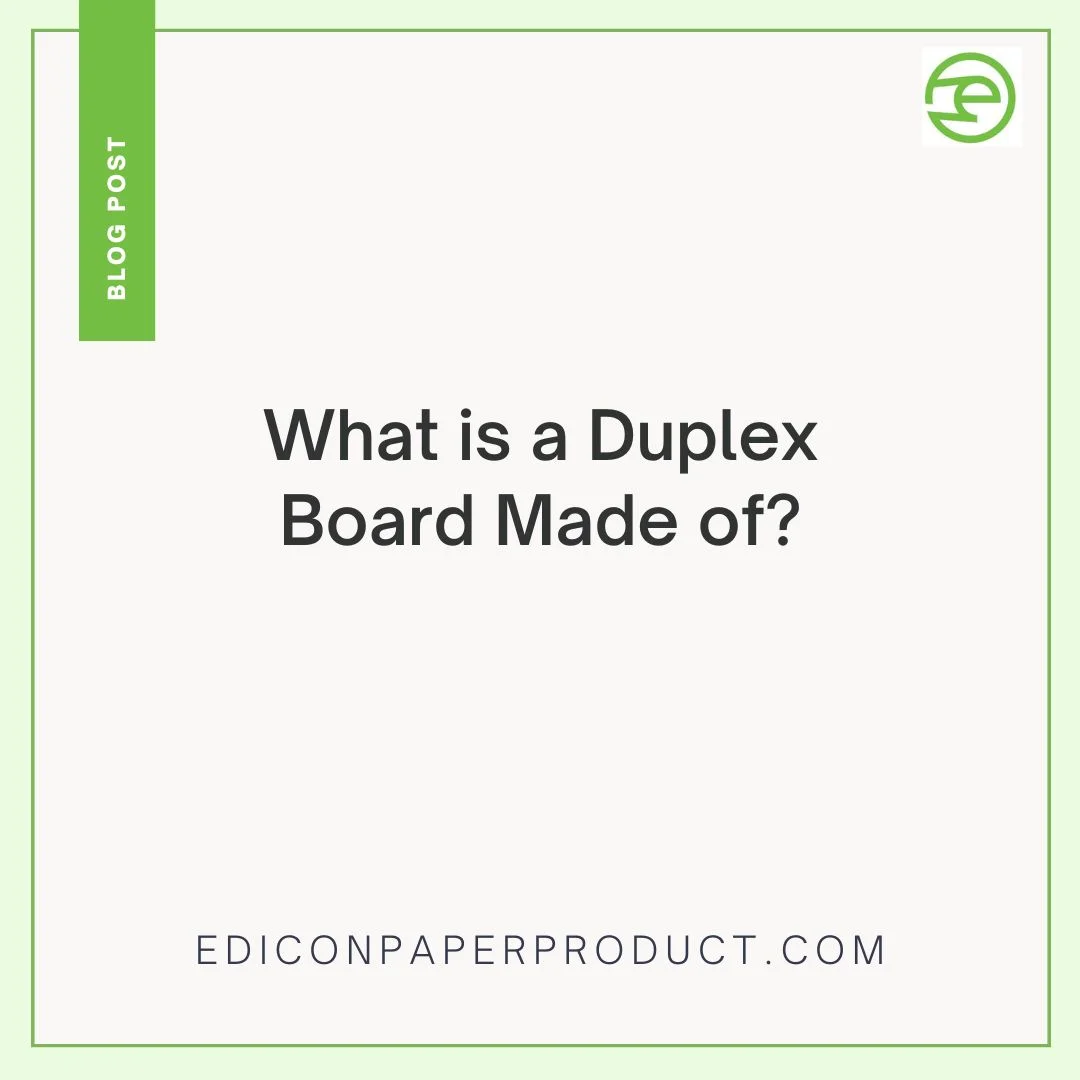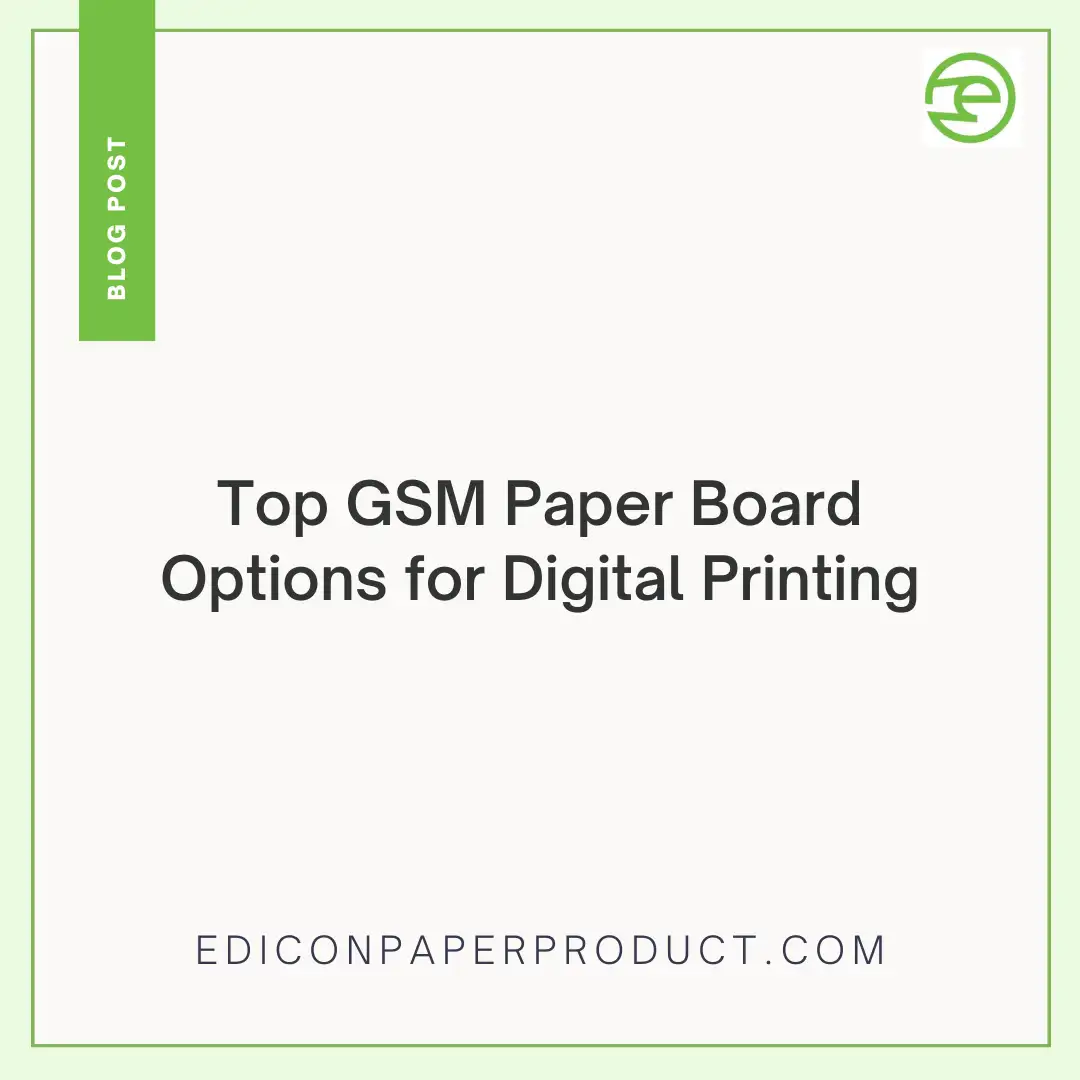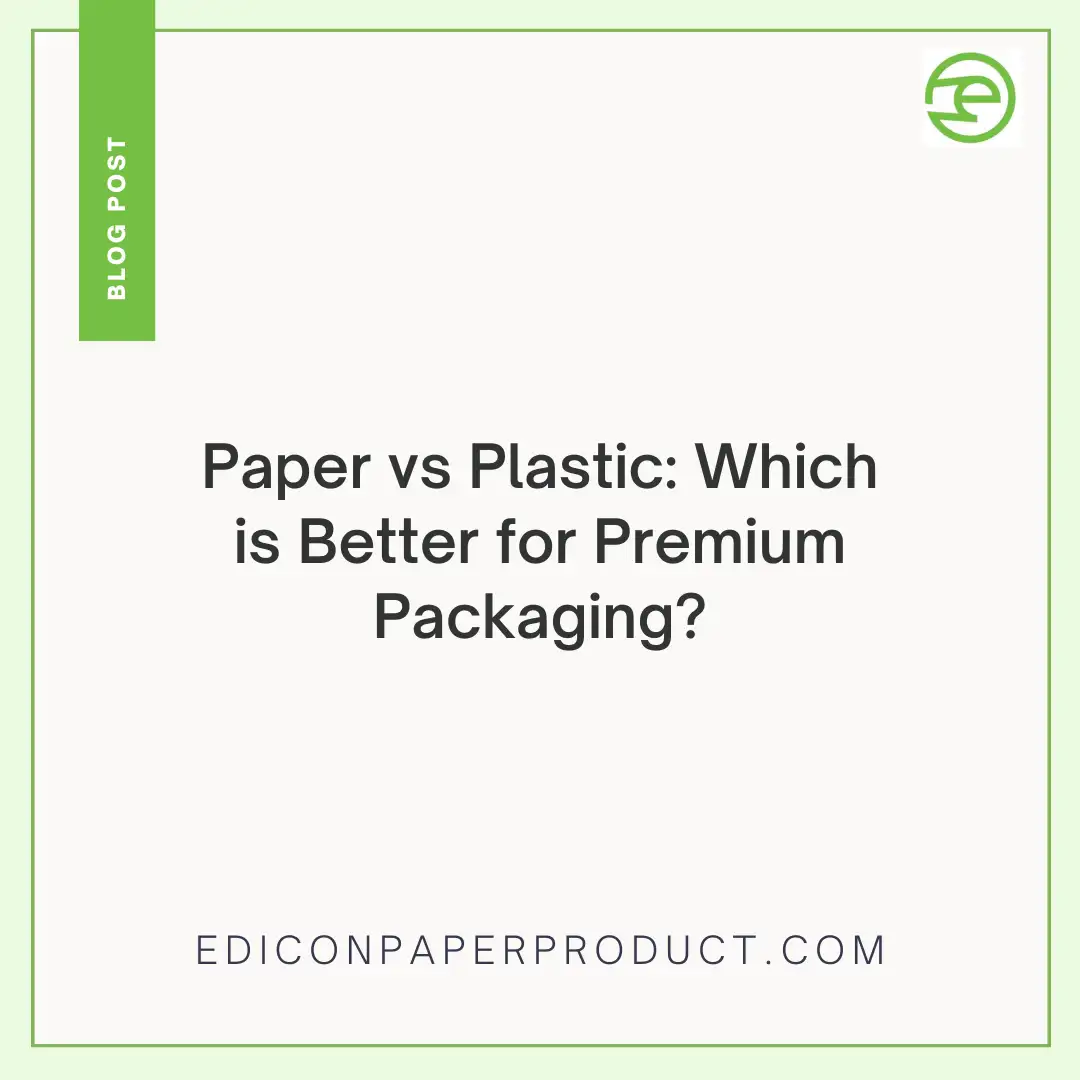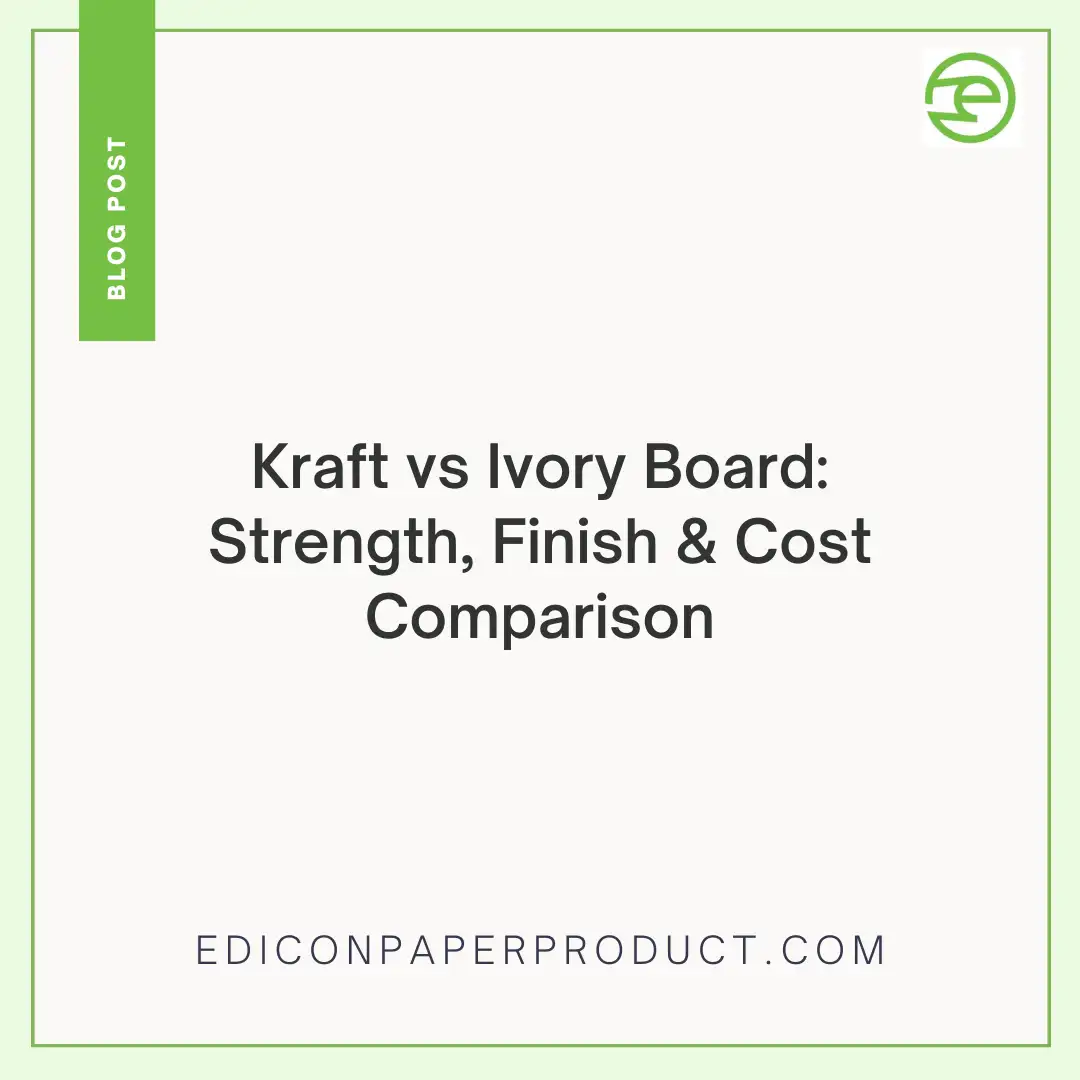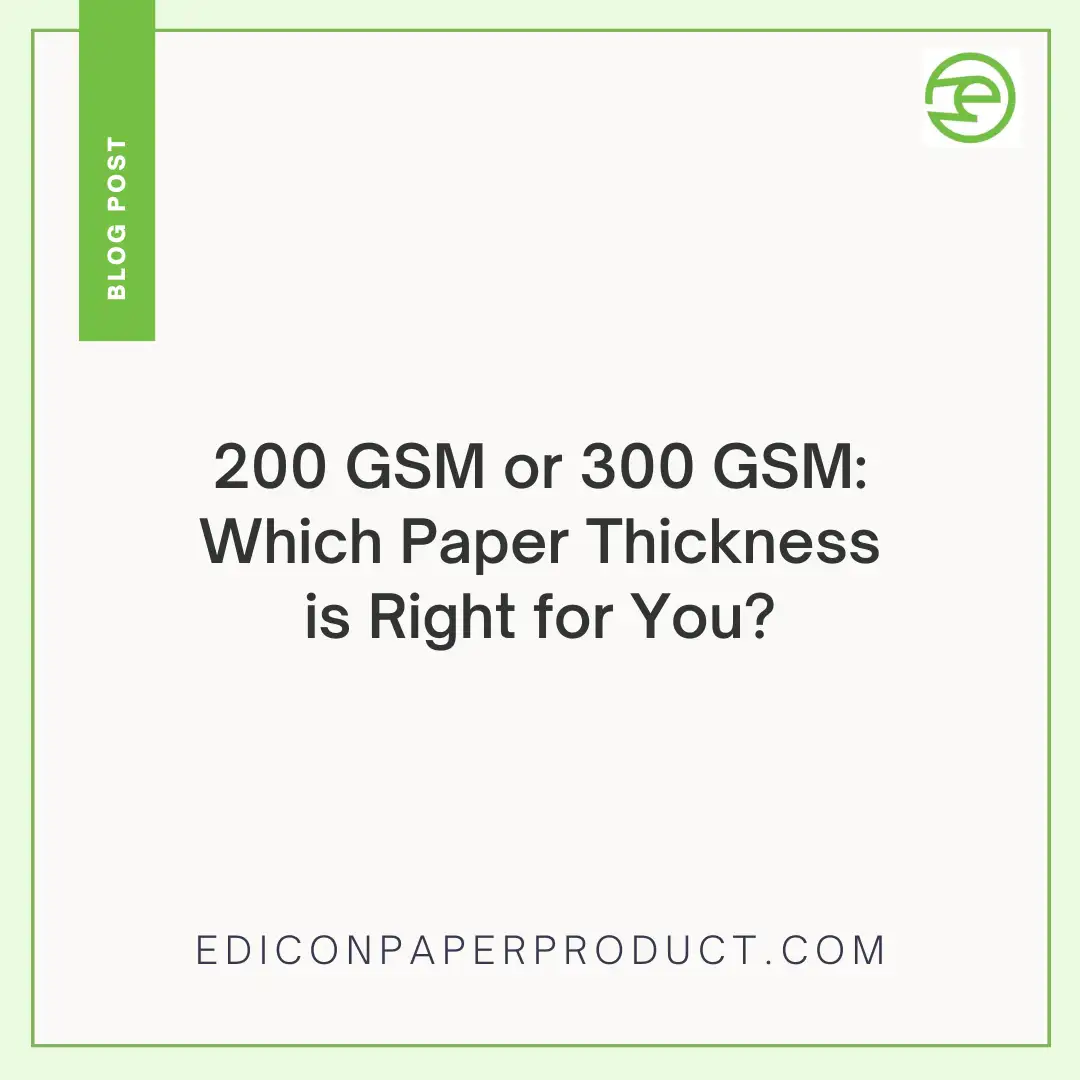What is a Duplex Board Made of?
Duplex boards are a type of paperboard preferred and widely used for packaging, printing, and stationery. It has a structure of a number of materials so it is durable and provides a polished appearance. Now the time has come to explore the major features of this material, its constituents and application.
What is a Duplex Board?
A duplex board is a kind of board made from paper but is made up of two layers and comes with a smooth white surface coated with a shiny material while the inner side it is either grey or brown. Duplex boards are well known for its stiffness, and sparkling smooth surface which can take much abusive handling and are preferred for folding cartons, packaging boxes and other paper based items. Because of these considerations it can be concluded that this type of material offers great possibilities for packaging applications where both the strength and look of the packaging material count.
Duplex boards are beloved in food processing and bottling, retail, pharmaceuticals, and printing settings, where it can be critical for packaging to be sturdy and visually appealing. Another reason that has lead to adopting of these containers is due to the fact that they can be recycled, something that makes them ideal for environmentally sensitive markets.
Materials Used in Duplex Board
Duplex boards are primarily composed of:
![]()
• Recycled Paper Pulp: A large number of duplex boards are produced from wasted paper or post consumer material and this makes them environmentally friendly and affordable when will be used on the packaging materials solutions.
• Bleached Pulp: For the white coated surface MCC can be diluted with bleached virgin fibers to produce a high brightness with colors suitable for excellent printing.
• Additives and Coatings: To improve the board’s roughness, durability and looks, kaolin clay, starch, or synthetic polymers can be laminated on a board. In addition these are hermetic unchangeable coats that they afford a glossy face and enhance print ability which makes the duplex boards ideal for elaborate brands on packaging’s.
Manufacturing Process
The production of duplex boards involves several key stages:
![]()
1. Pulp Preparation: Recycled paper is collected, cleaned then cut into smaller pieces that go through purification to get pulp to base the board on. This step is to make the material environmental and economically friendly.
2. Layering: Several plies of pulp are bonded with each other to offer the required tensile strength or rigidity to the board. The layering results to formation of a robust board and this makes it to be ideal for packaging requirements whereby it is used in.items which have a lot of weight.
3. Coating: The outermost layer is painted white or additional layer of clay or any material to give it smooth glossy look. It also provides a smoother surface for printing and gives the board the desired colour needed for surfacing bright designs and good graphics.
4. Drying and Cutting: Then the boards are dried and pressed to enhance their strength, subsequently they are sliced into sheets or rolls to meet the customers specification. The drying and pressing steps ensure the board does not become floppy and remains smooth surfaced as is the case with packaging and printing.
Types of Duplex Boards
![]()
1. Coated Duplex Board: Has a glossy white coated surface that offers high quality brilliant color yield and smoothness, for premium print requirements.
2. Uncoated Duplex Board: Used for application that are require to have a matt finish, with a natural and rough or coarse feel that is more appropriate for product display.
3. Thickness Variations: Duplex boards are available in various thickness which includes lightweight board for general use in standard packaging to the heavy board that provides extra thickness and rigidity for tougher uses. This flexibility is beneficial to many sectors of economy that require different types of packages.
Surface Layers of Duplex Board
Duplex boards typically have two distinct layers:
• Top Layer: A shiny white color throughout the surface, which also makes it easy to print sharp images, texts, logos, and even complex patterns. This layer provides rich color and clarity of text for use in products such as,
packaging and promotions.
• Base Layer: A grey or brown underside, often made from recycled material to offer exactly the framework and durability of the board. This layer also improves durability of the duplex board in a way that it becomes strong enough to offer the material a chance to pass through the channels of transportation and handling without breaking down, environmentally considered.
Applications of Duplex Board
Duplex boards are widely used across numerous industries due to their versatility, strength, and eco-friendly nature:
• Packaging: Perfect for creating products like collapsible cartons, food packaging cartons, beverage cartons and rigid packs, it is a strong, light solution for the packaging of many consumer products.
• Printing: Often used in brochures, business card, poster, catalog, and flyer printing since the surface is quite smooth resulting to good printing quality with distinguishable color and clear graphics.
• Stationery: Being used frequently in file covers, notebooks and presentation folders where strong durable materials used for office items and other formal papers.
![]()
• Cosmetics and Personal Care: Applied in the packaging of beauty products, cosmetic and toiletries; it provides the appearance of luxury as well as rigidity to support the products.
• Pharmaceuticals: Medicine packaging also uses duplex boards for they are strong, lightweight surfaces that protect merchandise during transportation.
• Toys and Gifts: Applied on toys, gift articles, souvenirs, hosiery, confectionery or any articles whose outer appearance has to be impressive but the contents secured for the purpose of display.
• Textiles: Used in textile packaging instances where clothes and accessories have to be transported safely and have to remain fashionable looking.
• Electronics: Used for small electronics products such gadgets, chargers, and trinkets and serves a double purpose of protection and aesthetics.
• Furniture: Using in home decorative, furniture parts and accessories packing and gifting articles, the conclusion as one of the sustainable and economical packaging solutions.
• Retail: Duplex boards are also used in most packaging of retail display packaging such as shelf-ready boxes to enhance orderly arrangement and enhance display.
Conclusion
Duplex boards are amongst the materials relevant in modern production of packaging and printing. These boards are a mixture of both recycled and virgin fibers and have utility value at a cheap price without being inimical to the environment. When used across these sectors as a whole with their ‘eco-friendly’ impacts it sets them up as market-relevant to sustainable packaging solution.
Duplex boards used by industries and businesses hence, require a quality material that is eco-friendly for packaging, hence the strategic placement of Edicon Paper in the production of these duplex boards. The company remains keen on the innovation and sustainability agenda and yet, it is letting no positions slide on developing only hard, mechanically strong, and importantly, affordable and environmentally friendly duplex board products.
FAQs
1. What makes duplex boards eco-friendly?
Duplex boards are made largely from recycled materials, reducing the demand for virgin fibers and minimizing waste.
2. Can duplex boards be recycled?
Yes, they are recyclable, although the coating may require specialized recycling processes.
3. What are the main uses of duplex boards?
Duplex boards are widely used in packaging, printing, and stationery products.
4. How is duplex board different from kraft board?
While kraft boards are unbleached and have a natural brown color, duplex boards feature a white-coated surface for enhanced aesthetics.
5. Is duplex board food-safe?
Food-grade duplex boards are available, featuring coatings that meet safety standards.
6. Why is the top layer of duplex boards coated?
The coating enhances print quality and provides a polished finish, making the board more visually appealing.

